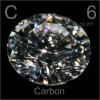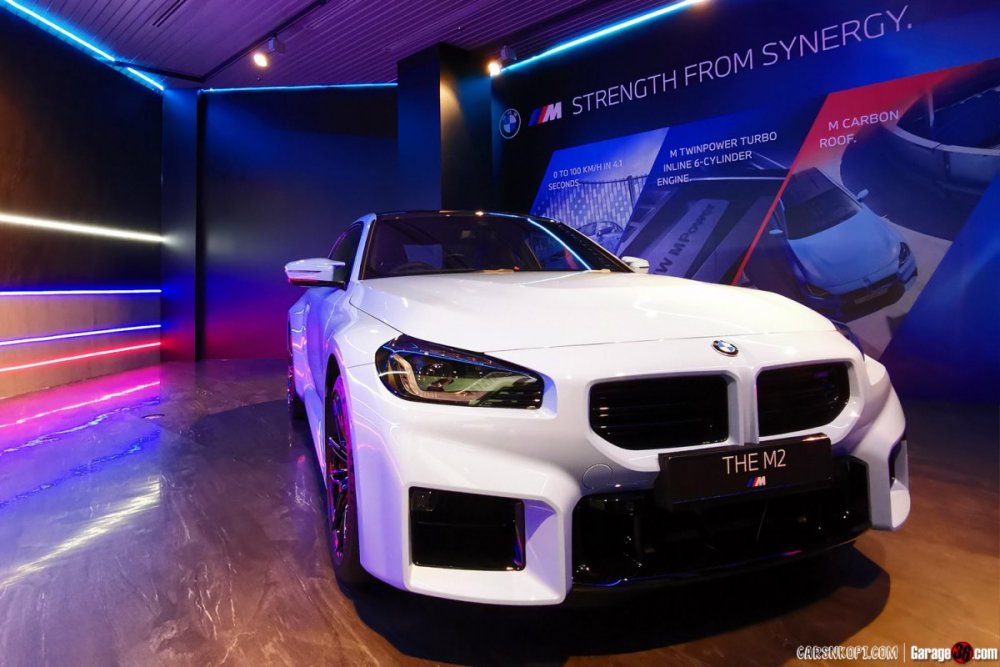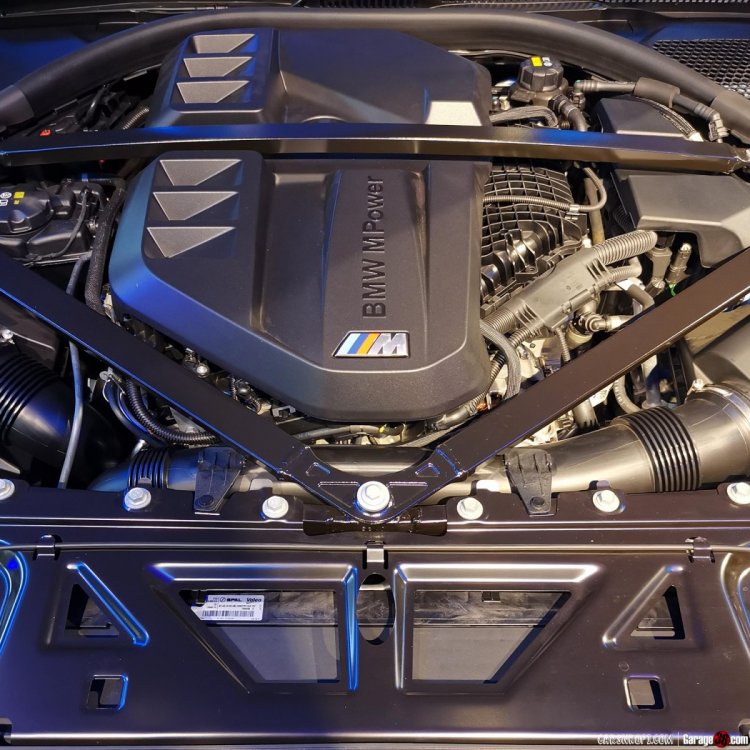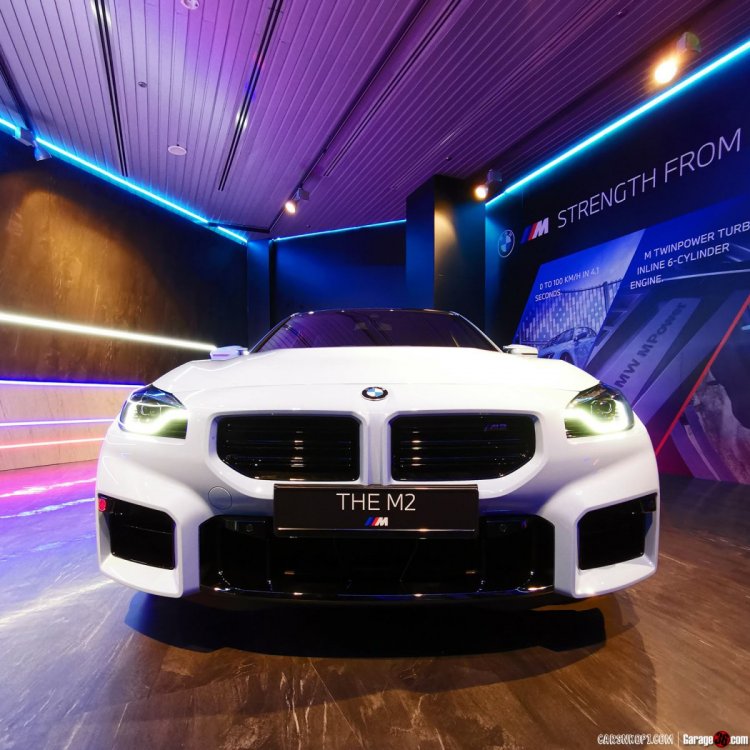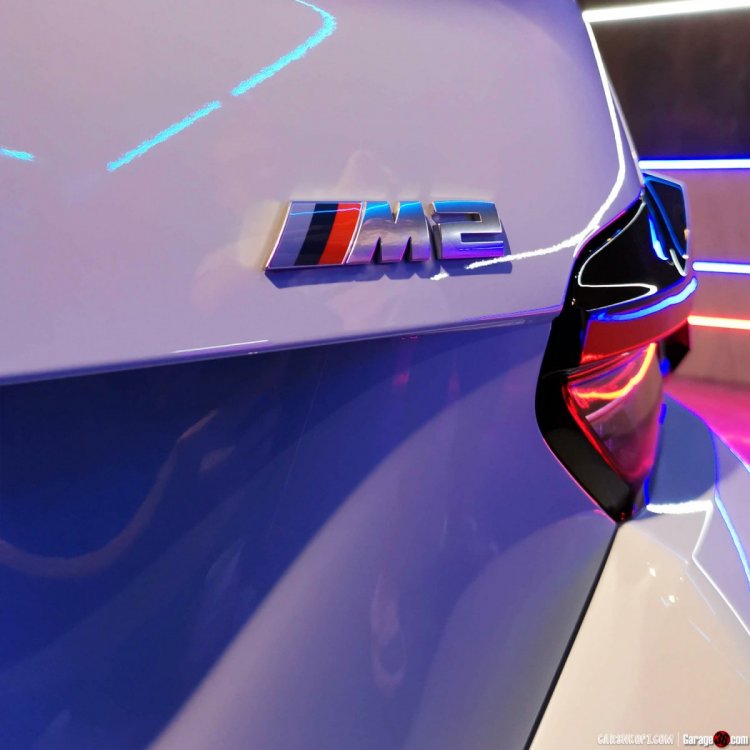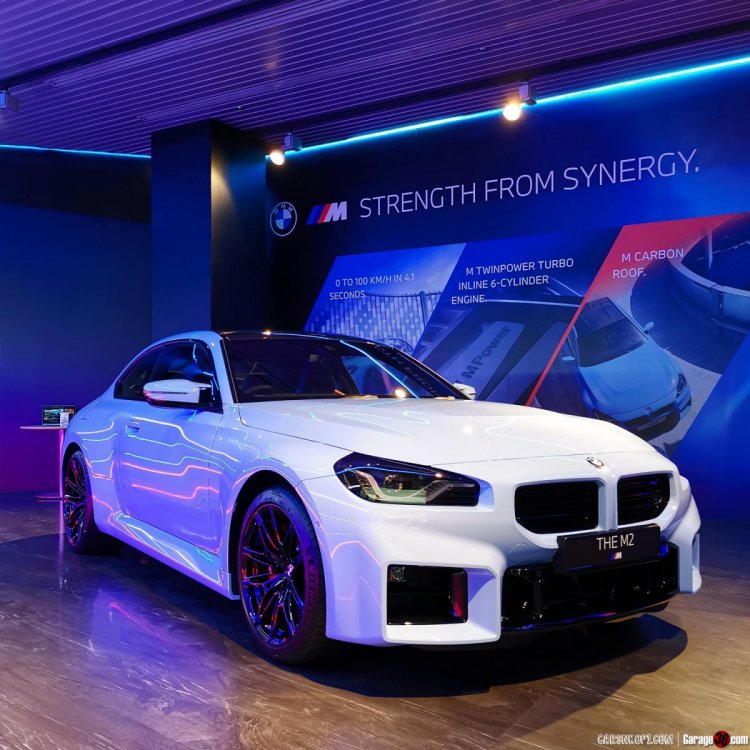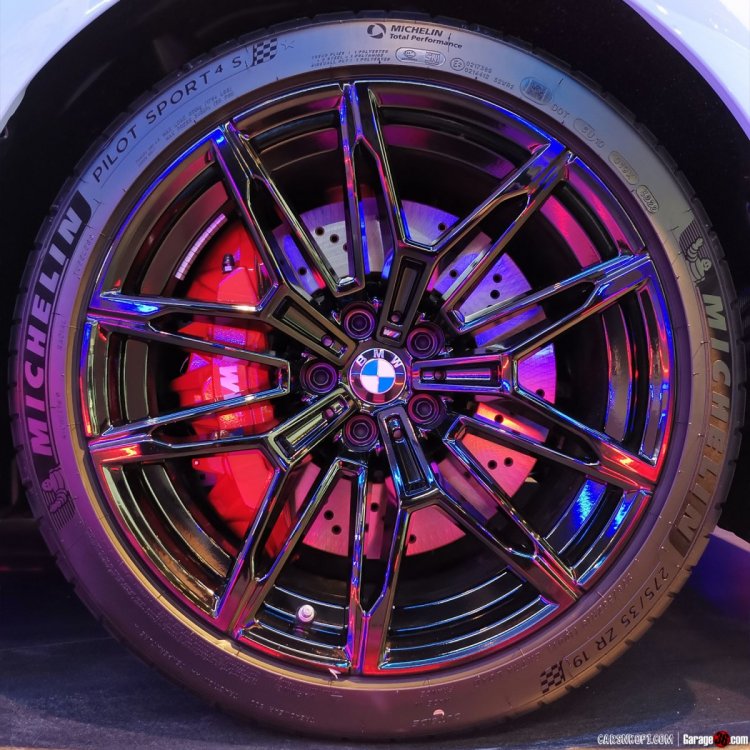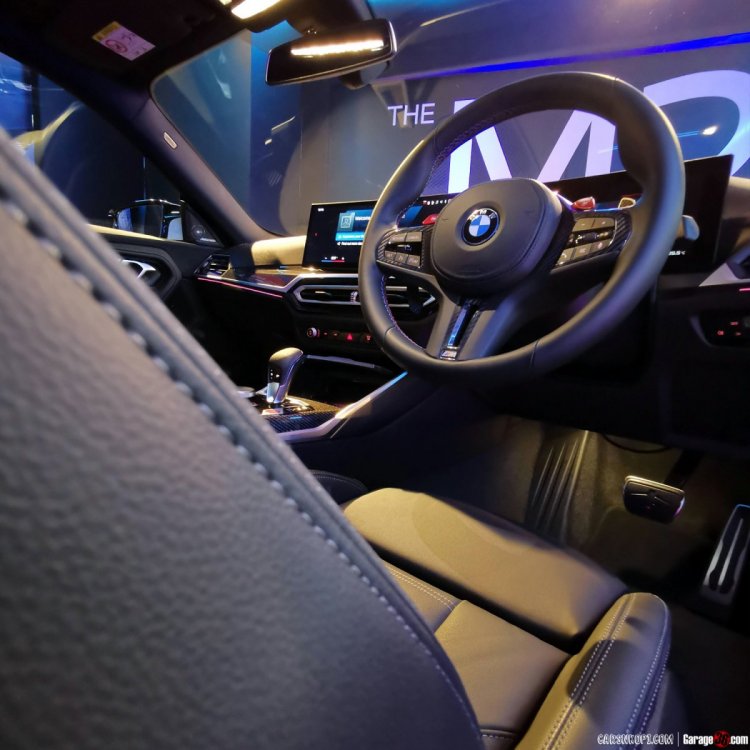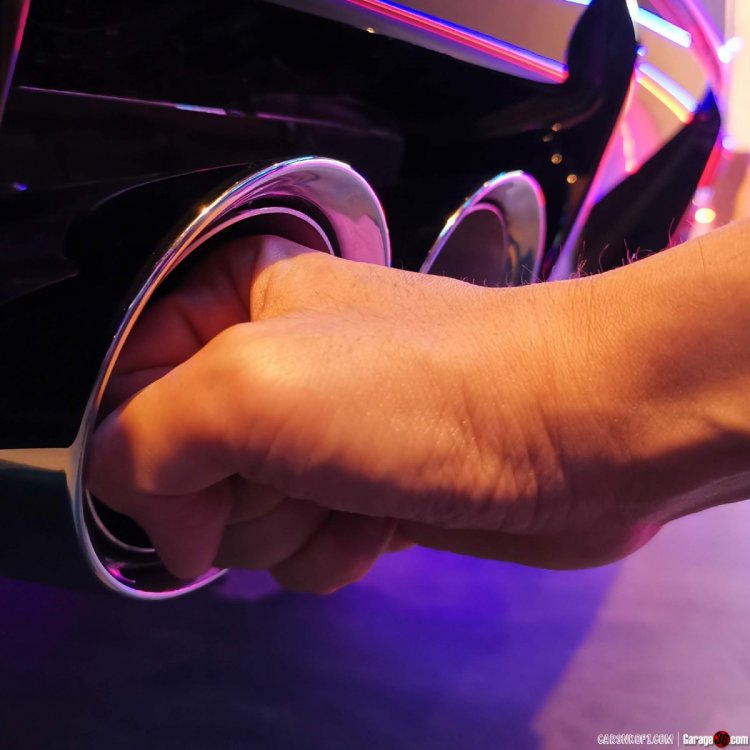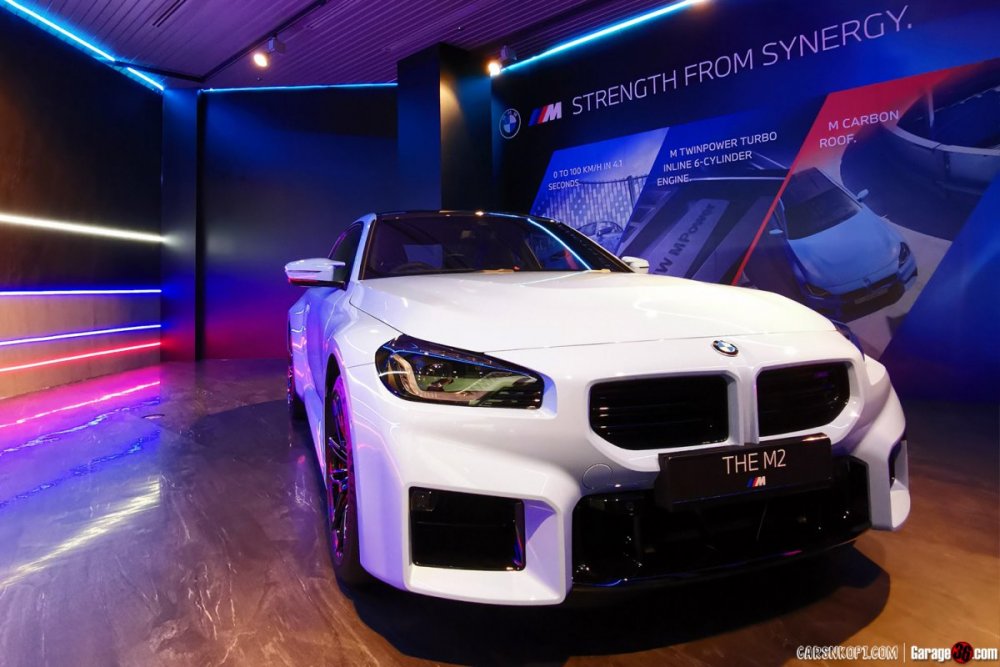Search the Community
Showing results for tags 'singapore'.
-
SINGAPORE – High certificate of entitlement prices are not quelling motor dealers’ appetite to grow their portfolios. Premium Automobiles, the retail dealer for Audi, has just been appointed the distributor for Zeekr, a luxury electric vehicle (EV) brand from Chinese automotive giant Geely. The agreement was signed in late December. The showroom for the brand will be built in the Leng Kee Road area in the first half of the year, Premium Automobiles said in a statement sent to The Straits Times late on Dec 28. The service facility will be in the Ubi industrial area. When asked, Premium Automobiles said the details are still being finalised for their exact locations, but added that these will be dedicated facilities that will not be shared with Audi cars, which the company will continue to sell. Zeekr will be launched here with two models – 009, which is a multipurpose vehicle (MPV), and X, a sports utility vehicle (SUV). Deliveries will begin in the third quarter of 2024. The 009 MPV is over 5.2m long, which makes the six-seater bigger than the latest generation Toyota Alphard, which measures just under 5m. Premium Automobiles did not confirm the exact specifications of the models, but the 009 MPV has a promised range of 800km on a full charge. Its dual motor set-up offers maximum power of 400 kilowatts, enabling it to sprint from 0kmh to 100kmh in 4.5 seconds, and making it the world’s fastest MPV. The X SUV is about the same size as the Nissan Qashqai at 4.4m long. Two versions are offered in the other markets where Zeekr is already operating. One has a 200kW motor that powers the rear wheels and boasts a range of up to 440km and the other is a zippier 315kW dual-motor all-wheel-drive version that can cover 400km on a single charge. Singapore, Hong Kong and Macau will be the first places where Zeekr right-hand drive cars are available. https://www.straitstimes.com/singapore/transport/chinese-ev-maker-zeekr-s-cars-to-be-sold-in-singapore-with-deliveries-from-q3-2024
-
VW Singapore plots Skoda comeback Volkswagen-owned Czech brand Skoda is making a comeback, yet again. But this time, it is parent group Volkswagen which will do its own importing and retailing here. Volkswagen Group Singapore - the manufacturer-owned importer and retailer of Volkswagen vehicles here - has registered a new company for this purpose. According to the Accounting and Corporate Regulatory Authority, Skoda Centre Singapore was registered last month and will be operating out of 247 Alexandra Road, which is the same address as the VW showroom. The Straits Times understands renovations are being carried out at the facility and that Skoda Centre Singapore will start operations in the first quarter of next year. Volkswagen Group Singapore was not available for comment, but it is understood that a meaningful price differential will be in place to re-launch the Czech brand here. Previously, Skoda cars - which are based on Volkswagens - were the same price or even costlier than equivalent VW models. In other markets, Skodas are cheaper. The brand was last represented by Harvest Automobiles, part of businessman Peter Kwee's now dormant motor group of companies. Harvest Automobiles went bust in 2013 - the third Skoda agency to have failed in Singapore. The Straits Times understands Vertex Automobiles, the dealer for Chinese automobile brand Chery that is owned by egg trader Lian Fong, had made a pitch for the Skoda franchise. But it has since landed Seat, a Spanish brand also owned by Volkswagen Group. Skoda had also been courting Trans Eurokars, a multi-franchise group owned by businessman Karsono Kwee. Among its brands are Rolls-Royce, Porsche, Mini and Mazda. The best year for the Skoda brand here was 2010, when it sold 105 cars. That is less than 4 per cent of Volkswagen sales last year. Will the brand have better success under Volkswagen? Nanyang Business School's Adjunct Associate Professor Zafar Momin, previously an automotive expert with the Boston Consulting Group, said: "Skoda may be able to make a comeback in Singapore if priced and promoted properly. It needs to be very competitive with its Korean competitors in terms of pricing, as it could provide solid, competitive products targeted at value segments of the markets. "With VW Singapore now doing it themselves, it has a better chance than before. Having said that, I wonder what "comeback" really means in a small crowded Singapore car market which has small volumes for many non-mainstream brands. Would it really be worth the effort and to what extent would it cannibalise VW products?" When contacted back in 2014 - when Harvest Automobiles relinquished the business - Volkswagen Group Singapore said it had no plans to take over the Skoda retail business here. It has, however, taken over the maintenance and warranty of Skodas here. There are about 400 Skoda cars in Singapore today. As a onwer of both Skoda and VW model, I can attest that Skoda is indeed better, in almost every aspect, than VW. I can wait to welcome it back to Singapore!! Here are some interesting models in current Skoda lineup, that I hope can be made available to local motorist when sales start next year. Superb Superb Combi Kodiaq
-
Has anybody feel that yesterday(Mon 8-Dec-2008) was indeed very cold? From my flat i have to wear sweater in the morning, i am jsut wondering whether it was below the official announced 24 deg C, anyone felt the same?
-
lai liao 😁 @ https://www.techinasia.com/source-tesla-nears-final-approval-sell-cars-singapore
-
I decided to create a separate thread for AI. Things are really rapidly changing. AI to replace sales staff that are in a revolving door situation. Seems like this company has hit upon a niche that larger companies are very interested in. Not all of these ideas will work out. But you can bet a significant portion of desk/admin jobs will slowly be redundant over the next 10-15 years. Maybe by then, some of us would be working alongside AIs to do some of the routine tasks. https://techcrunch.com/2017/04/09/saleswhale-seed-funding/
- 455 replies
-
- 2
-

-
- artificial intelligence
- singapore
-
(and 3 more)
Tagged with:
-
I'm beginning this thread so I can continue to discuss matters on a topic that interests me. I know there is a thread with similar content, but it's become a bit toxic, so if the mods don't mind, I'll start one here? Otherwise go ahead and merge. Basically we have an economic crisis on us, and internationally things are not doing well either. But in spite of this, property prices seem to be headed northwards and the agents will want to tell you, they won't drop. But job losses are on the way, and the capital appreciation on property isn't what it used to be and despite what agents try to tout, one must consider all factors rationally, and see if your money is better served elsewhere. Eg a good benchmark will be the 2.5% that CPF offers. But property remains enticing because it takes a lot more effort and investigation to find alternatives and not all Singaporeans are that hardworking or familiar with the investment instruments available. I wonder what the rest think? Cheers
-
Whether donating money or doing volunteer work. Just a simple question. Don't read too much into it.
-
Starting a thread to consolidate the sharing of SIM-only plan experiences and lobangs. Still 1 month+ left on my current M1 SIM-only contract and looking at what other players (telco and MVNO) are offering. Came across Zero1's 6u plan which seems pretty competitive, so putting this plan on my radar screen.
-
With crisp cold mornings, beautiful blue skies and an entire week’s worth of automotive-centric activities and events peppered throughout the city, there is no doubt that early in January, Tokyo is the ultimate destination for anyone whose heart beats to the rhythm of high-revving engines. Unfortunately, we’re not in Tokyo this year. While many of our friends and acquaintances prepare to step into the legendary hub of automotive tuning—the Tokyo Auto Salon—we’re here for an early, albeit brief (thanks to work obligations), preview of the 2025 Singapore Motorshow. If you perceived our local Motorshow to be more of a retail event, I’m happy to announce, you’re not wrong. Unlike the world’s renowned international showcases, our smaller market gives manufacturers little reason to debut groundbreaking launches or stretch their budgets to go all out. Even so, there’s plenty for the casual visitor to enjoy, with a commendable lineup of marques putting their best foot forward—all under one (albeit modestly sized) roof, with local launches adding some glamour and excitement to the event. Full story: https://carsnkopi.wordpress.com/2025/01/09/gearing-up-preview-of-the-2025-singapore-motorshow/
- 188 replies
-
- 13
-

-
.png)
-
- sg motorshow
- motorshow
-
(and 2 more)
Tagged with:
-
Hey guys, any1 knows which marathon is in Feb - April 2011 which has the 10km distance? Cos i planning to train for marathon but i dun wan to go straight for the 42km, i prefer to gradually increase the distance..so im hoping to run 10km beginning of next yr..den 21km at adidas sundown in May..den eventually the StanChart 42km in Dec next yr. Any advice? Thanx in advance.
-
https://edition.cnn.com/2025/01/08/travel/worlds-most-powerful-passports-for-2025/index.html Who’s the itty-bitty city-state with the global passport the world thinks is great? There’s new year cheer for Singapore as it reclaims its place at the top of a quarterly ranking of the world’s most powerful passports. Holders of this desirable red travel document enjoy visa-free access to 195 out of 227 destinations worldwide, according to the Henley Passport Index, more than citizens of any other place on the planet. Japan is second in the ranking, with an open door to 193 destinations, having secured the silver medal by regaining visa-free access to neighboring China for the first time since the Covid-19 lockdowns. The EU member states of France, Germany, Italy and Spain are at No. 3, along with Finland and South Korea, with access to 192 destinations with no prior visa needed. The fourth position in the rankings is a testament to the power of the European Union’s border-free Schengen area, which guarantees free movement to more than 425 million EU citizens. It’s held by seven EU countries, each with visa-free access to 191 destinations: Austria, Denmark, Ireland, Luxembourg, Netherlands, Norway and Sweden. Squeaking into fifth place are five countries — Belgium, New Zealand, Portugal, Switzerland and the United Kingdom — all of which have visa-free access to 190 destinations. The mobility gap Now in its 20th year, the index, created by London-based global citizenship and residence advisory firm Henley & Partners, tracks global freedoms in 227 countries and territories around the world, using exclusive data from the International Air Transport Association (IATA). At the opposite end of the ranking, at No. 106, Afghanistan remains locked in bottom place, with visa-free access to just 26 destinations, two fewer than a year ago. Syria is at No. 105 (with 27 destinations) and Iraq is at No. 104 (with 31 destinations). This means that the gap between the travel freedoms enjoyed by the citizens at the top and bottom of the ranking has never been wider. “The very notion of citizenship and its birthright lottery needs a fundamental rethink as temperatures rise, natural disasters become more frequent and severe, displacing communities and rendering their environments uninhabitable,” said Christian H. Kaelin, chair of Henley and Partners, in a press release. “Simultaneously, political instability and armed conflicts in various regions force countless people to flee their homes in search of safety and refuge.” Climbers and fallers The rest of the top 10 is dominated by European countries, with a few exceptions. Australia and Greece are tied at No. 6, while Malta, Poland and Canada are at No. 7. Eighth place is shared by Czechia and Hungary, the United States and Estonia are at No. 9, and No. 10 is held by Latvia, Lithuania, Slovenia and the United Arab Emirates. The UAE is one of the index’s biggest success stories in global mobility, having secured access to an additional 72 destinations since 2015, allowing it to climb 32 places to 10th spot with visa-free access to 185 destinations. China is also a big climber, having jumped up the list from 94th place in 2015 to No. 60 in 2025. Only 22 of the world’s 199 passports have fallen down the ranking in the past decade and some surprising names are at the top of the list. Venezuela is at No. 1, followed by the United States as the second-highest faller. It’s dropped seven places from No. 2 to No. 9. The South Pacific archipelago of Vanuatu is at No. 4, followed by the British passport at No. 5 — a former No. 1. Canada is No. 5 on the losers list, having dropped three places in the ranking in the last decade. Henley & Partners’ list is one of several indexes created by financial firms to rank global passports according to the access they provide to their citizens. Arton Capital’s Passport Index takes into consideration the passports of 193 United Nations member countries and six territories — Taiwan, Macao, Hong Kong, Kosovo, the Palestinian territories and the Vatican. Territories annexed to other countries are excluded. It’s also updated in real-time throughout the year, but its data is gathered by close monitoring of individual governments’ portals. Arton’s Global Passport Power Rank 2025 puts the United Arab Emirates in the top spot, with a visa-free/visa-on-arrival score of 180. Second place is held by Spain, with a score of 179. The most powerful passports for 2025 1. Singapore (195 destinations) 2. Japan (193) 3. France, Germany, Italy, Spain, Finland, South Korea (192) 4. Austria, Denmark, Ireland, Luxembourg, Netherlands, Sweden, Norway (191) 5. Belgium, New Zealand, Portugal, Switzerland, United Kingdom (190) 6. Greece, Australia (189) 7. Canada, Poland, Malta (188) 8. Hungary, Czechia (187) 9. Estonia, United States (186) 10. Lithuania, Latvia, Slovenia, United Arab Emirates (185)
-
Boom and doom? Singapore to launch vaccinated travel lanes with India, Indonesia and Saudi Arabia SINGAPORE: Singapore will extend its vaccinated travel lane (VTL) scheme to more countries starting from Nov 29, according to the Ministry of Health (MOH) on Monday (Nov 15). The country intends to launch VTLs with India and Indonesia from Nov 29, and with Qatar, Saudi Arabia and the United Arab Emirates (UAE) from Dec 6.
-
Personally I took Scootbiz once was a terrible experience. The food worst than the worst food i ever had in Tekong, they had used spoons on the floor from the previous passenger and they didnt even check for previous passenger belongings! I found a headphone case under my footrest when I couldn't close it Sambal stains and smudges on the walls... all this on a new 787 "Dreamliner" I dont think ill ever take again. With the recent Scoot delay debacle do you all still dare to sit?
- 65 replies
-
- scoot ; flight ; delay
- singapore
- (and 6 more)
-
Personally, the mindset of the national is if it is FREE we will keep it hence, i dont envisage a possible reduction in our NS duration what i am very worried about is the world is moving so very fast we already had been disadvantaged by NS, resulting in being 2 or 2 1/2 years behind our girls and our foreign classmates in the future it will be worse for our children even 6 months can mean a break or score the economic cycle also is shorter hence, i am just worried about our children am i worrying too much for our kids or should i just relax TAIPEI
-
A Singaporean man has been charged with dangerous driving over a four-car accident in New Zealand that killed a motorcyclist. Lew Wei Kiong, 29, had been due in the Dunedin District Court on Tuesday (Dec 8) to face a count of dangerous driving causing death. Three new charges of dangerous driving causing injury were also due to be brought against him, reported the Otago Daily Times, but the case has been adjourned to Dec 22. Lew, who works at the Energy Market Authority (EMA), was involved in the accident along the state highway in North Otago, about 20km south of Oamaru, on Nov 29. EMA confirmed to Shin Min Daily News that Lew was an employee and that it was extending aid to two employees in New Zealand. According to stuff.co.nz, Lew was driving a rented Toyota and had allegedly crossed the double yellow lines on the highway to overtake a group of cars. He crashed into two cars and a motorcycle travelling in the opposite direction. The passenger in the Toyota, who is also believed to be Singaporean, had to be cut from the car and was flown to Dunedin Public Hospital with serious injuries. Five others suffered injuries, while the motorcyclist, 39-year-old Craig Alan Chambers, died at the scene. New Zealand police had blamed the car crash on driver "inattention". The accident also reportedly reignited a debate over tourist drivers and the condition of roads in New Zealand, with Labour Party MP Damien O'Connor suggesting that poor road design could have led to the crash. He said that certain roads on the country's south island could be confusing for foreign drivers and clearer signage was needed. http://www.straitstimes.com/asia/australianz/singapore-tourist-charged-with-dangerous-driving-after-fatal-crash-in-new-zealand?utm_campaign=Echobox&utm_medium=Social&utm_source=Facebook#xtor=CS1-10
- 229 replies
-
- 5
-

-
- crash
- new zealand
-
(and 6 more)
Tagged with:
-
Hot on the heels of the rather erm, provocative XM, BMW Asia has now brought along its smaller, though no less anticipate stablemate, the M2 to our local shores and we were lucky enough to be privy to an early media preview. While the new car is slightly larger all around (except for height where 7mm is shaved off) from its predecessor, an almost 50hp bump in power (from the M2 Competition) means the new car is even quicker than the car it replaces, though only by .1 of a second for both gearbox options. Yes, gearbox options, because thanks to the heros of homologation at BMW Asia, you can spec your brand new M2 with a third pedal and 6 do-it-yourself forward gears should you feel the 8-speed automatic isn't quite "macho" enough. And macho might be the words that come to mind when chancing upon the M2. While it might not be as pretty as the previous M2, which let's face it, is one of the best looking BMWs out there even today, the new car does have its own distinct visual flavour. Personally, I think the front end is too fussy and overdesigned. Where aesthetics are concerned for this generation, the less well-endowed M240i in Thundernight Metallic takes the cake. You know the drill. BMW's S58B30. 3-litres, Twin Turbos, 6-cylinders all lined up to punch out a heady 460 horses and 500Nm of torques. A healthy dollop more punch than the considerably more expensive Porsche 718 Cayman GTS. Which then brings us to the price. Whilst never intended to be anywhere near "cheap", the new car represents a considerable increase from its M2 Competition predecessor and an even bigger leap from the original M2 launched back in 2016. At S$380,000 (without COE), the new M2 is a rather expensive proposition, but nowadays, what isn't?
-
Didn't realize that the causeway has been around for a century. It was officially opened on 28 June 1924. Source: https://www.businesstimes.com.sg/international/asean/malaysia-singapore-causeway-bridging-borders-100-years EVERY morning, two to three 40-foot trailers from Malaysian dairy producer Farm Fresh depart from farms in Kota Tinggi and Desaru, each delivering 18,000 litres of fresh milk to Singapore. Founder and group managing director Loi Tuan Ee credits the Johor-Singapore Causeway – which is celebrating its 100th anniversary this month – for this seamless operation. “The proximity, easy accessibility and lower logistics costs enable us to send fresh milk to our Singaporean customers daily,” he told The Business Times. The Malaysia-listed dairy producer, based in Johor, began exporting to Singapore six years ago. Today, the city state is its largest export market, contributing around 5 per cent of total sales. Farm Fresh's trailers are among 3,000 to 4,000 trucks transporting goods from Malaysia that queue daily at the Johor Bahru Customs, Immigration and Quarantine complex, waiting for clearance to enter Singapore. The 1 Km-long motorway crossing, also referred to as the Malaysia-Singapore Causeway, is one of the world's busiest border crossing, averaging 350,000 travellers and 100,000 vehicles daily. During peak periods such as school holidays, it handles more than 400,000 crossings daily. Singapore Immigration and Checkpoints Authority (ICA) projects that this will rise to 400,000 daily travellers by 2050. Some days, the numbers can be staggering. The recent Hari Raya Haji long weekend broke records with more than 530,000 people crossing on the Causeway and Tuas Second Link on Jun 14, said ICA. The Causeway is more that a bridge for Jeffrey Lai, president of the Johor Bahru Chinese Chamber of Commerce and Industry. "It's not just for workers travelling from JB (Johor Bahru)to Singapore everyday... it also promotes the flow investment, education and culture between both countries," said Lai, as he recalled pleasant bus journeys during his school days from Singapore to JB on Friday evenings. Lai grew up in Singapore, where his parents moved to when he was just three. After the returned to JB to start a business, Lai remained in Singapore for his secondary school education, making the cross-border commute a nearly weekend to visit them. "I still remember... every Sunday night, my father would drop me at the old customs complex, and I would take the number 170 bus from JB to Singapore," he reminisced. Now residing in JB, he still uses the Causeway to visit relatives, friends and business partners here, and to enjoy his favorite Singapore chicken rice. "The Causeway is an important link connecting both countries," he added, noting that more than 10,000 students cross the Causeway daily for their studies. They are not just Malaysian students from JB studying in Singapore, but also, increasingly, students from Singapore going to international schools in JB. Kelvin Kee, executive director of international business division at Singapore Business Federation (SBF), said bilateral trade between Singapore and Malaysia has grown, not just for merchandise, but also in services and digital trade. "Following the lifting of pandemic restrictions, we have seen the cross-border flow of people using the Causeway return to pre-pandemic levels, and even exceed such levels during peak periods," he told BT. He highlighted that Malaysia's proximity to Singapore offers business owners an attractive option for overseas expansion, with significantly lower costs for labour, overheads, rent and land. Since the GlobalConnect@SBF programme launched in November 2019 to aid Singapore businesses in overseas expansion, the business chamber has facilitated 32 successful projects into Malaysia as at December 2023, across various sectors including manufacturing, retail, education and services. In 2023, Johor garnered a total investment of RM43 billion (S$12.4 billion) from 751 approved projects, with more than 70 percent, or RM31 billion, coming from foreign direct investment (FDI). Over half of the FDI went to service sector, while the manufacturing sector received 30 percent. Lee Ting Han, Johor state investment, trade, consumer affairs, and human resources committee chairman, said 70 percent of the FDI in the state's manufacturing sector comes from Singapore. With ongoing projects and robust tourism, the state government is confident total investment in 2024 will surpass last year's. In the first quarter of 2024, 221 projects were approved, focusing on machinery and equipment, food processing, electrical and electronics, and chemical and petrolchemical sectors. Singapore is the second-largest investor in Malaysia and one of the biggest investment sources for Johor, especially the Iskandar region - Malaysia's southern growth corridor. From 2006 to September 2023, cumulative investment from Singapore to the Iskandar region reached RM45.8 billion - about 25 percent of total investment. Wile the Causeway remains the primary connection between the two cities, a significant catalyst for enhanced connectivity will be the JB-Singapore Rapid Transit System (RTS), set to begin operations by end-2026. In an earlier interview with BT, Malaysia's Mass Rapid Transit Corp CEO Mohd Zarif said the 4 km journey on the light rail shuttle service will take about five minutes. If all goes well, travelling from Bukit Chagar station in JB to Singapore will take only 15 minutes. Chua Hak Bin, regional co-head for macro at Maybank Investment Banking Group, expects the RTS, which is over two-thirds complete, to improve connectivity, reduce congestion and strengthen JB-Singapore ties. The RTS will increase its capacity to 10,000 passengers per hour per direction, compared to the current KTM rail service's 640 passengers.
-
Christmas coming so must praise something good last CNY i visited a relative place where my boy forgotten to close the back door, yah not close at all and leave it wide open. Throughout the 3-4 hours, no one take anything from my car, except for the 2 hours heavy rain that surprisingly the car was not flooded inside [laugh] Last night left my driver side door open, not completely close and with a gap (this time not wide open), this morning came down, nothing was taken. Anyway, my car is cheap B&B car with bird sh!t all over, maybe that was why no one want to come near
-
hi all started this new thread for perodua owners in s'pore. can share tips on modi, spare parts n accessories, etc.
-
Source: https://mustsharenews.com/singapore-nuclear-energy-2050/ Singapore Could Potentially Use Nuclear Energy By 2050 When the topic of nuclear energy gets brought up, some might instinctively think of the dangers associated with the alternate energy source. However, nuclear energy can also be an efficient power source. On Tuesday (22 Mar), the Energy 2050 Committee published a report showing that Singapore could tap into nuclear energy in the coming decades. With recent advancements, nuclear technology has apparently become safer and more reliable. However, more research and development are needed to determine if it’s indeed viable for Singapore. Nuclear energy could supply 10% of Singapore’s needs by 2050 According to The Straits Times (ST), a report commissioned by the Energy Market Authority (EMA) concluded that about 10% of Singapore’s energy demand could be supplied by nuclear energy by 2050. While Singaporeans might understandably be worried about nuclear energy, the Energy 2050 Committee said advancements in the field have made the alternative power source safer than before. The report projected 3 uncertain geopolitical scenarios in 2050: Clean Energy Renaissance Climate Action Bloc Emergent Technology Trailblazer S’pore can determine if nuclear energy is viable by 2040s In the 3rd scenario, the world is fragmented and technology advancements will delay but eventually arrive. Singapore will be able to deploy low-carbon alternatives, such as nuclear energy, into its energy mix. The report stated that a fragmented geopolitical situation means that countries would find it harder to collaborate and achieve their climate targets. This would limit electricity imports in Singapore’s energy mix. This is as opposed to the other 2 scenarios, where electricity imports would contribute a significant portion of Singapore’s energy needs. Scenario 1: Clean Energy Renaissance Scenario 2: Climate Action Bloc Nevertheless, in all 3 scenarios, electricity imports, hydrogen, solar, and energy storage systems will be important. The Straits Times (ST) reported that in 2014, Singapore allocated $63 million to fund research and education in nuclear safety, engineering, and science. By the 2040s, Singapore would likely be able to determine if nuclear energy is viable. If so, we can start developing domestic generation capacities. Could contribute greatly to our climate efforts Once associated with danger and volatility, we are glad that modern developments have made nuclear energy much safer and hopefully more viable. While it might sound ambitious for Singapore to incorporate nuclear energy, it could contribute greatly to our nation’s climate efforts.
-
I am thinking about this, about what kind of people and society we want here in Singapore. The truth is, the current world situation now is quite difficult and unpredictable. And unfortunately bad things can happen when you don't expect it, sometimes even with the best of planning. So, when bad things happen, whether individually or collectively as a country, should those in a position to help, reach out to help? Or is it every person for themselves, you die your problem?
-
I feel like there's a lot of negativity around here in the past 1-2 years or so. Come, let it all out here. What is making you all so upset/angry/dulan?
-
https://www.straitstimes.com/singapore/more-spending-on-healthcare-does-not-mean-a-healthier-population-ong-ye-kung SINGAPORE - The Republic’s healthcare challenge in the coming years is not spending more, but to ensure that Singapore does not go the way of many OECD countries where healthcare costs are “spiralling and escalating out of control”, Health Minister Ong Ye Kung told Parliament on Wednesday. Better health outcomes can be achieved by continuing with Singapore’s sensible and practical approach of having different layers of safety nets – subsidies, MediShield Life, MediSave and MediFund – and combining it with the Healthier SG strategy to reduce the sickness and disease burden even as the population ages, he added. Mr Ong was responding to Progress Singapore Party (PSP) Non-Constituency MP Leong Mun Wai’s assertion on Tuesday that the Government has not spent enough to cover Singaporeans’ healthcare costs, and should be spending more to help with medical bills. Mr Leong had cited data to show that the Government’s share of healthcare expenditure is lower than the average among Organisation for Economic Cooperation and Development (OECD) countries. The majority of the 38 OECD members are regarded as developed countries. Mr Ong noted that it is widely accepted by health economists that spending more on healthcare does not mean better outcomes. For instance, the United States and Britain spend about 17 per cent and 10 per cent of their gross domestic product on healthcare respectively, compared with Singapore’s 4 per cent. Despite this, both those countries are facing a high incidence of chronic illnesses and high obesity rates, and expected lifespans there are lower than in Singapore, he said. Conversely, Singapore has delivered good outcomes given how much it is spending, while keeping healthcare affordable for the middle- and lower-income groups, Mr Ong added. Seven in 10 Singaporeans in subsidised hospital wards do not pay any out-of-pocket expenses, and nine in 10 pay less than $500 in cash. “So when Mr Leong asked the Government to spend more to lower out-of-pocket expenses further, he really meant to channel resources to unsubsidised patients, that is, those staying in A class wards or private hospitals,” he said. “This is where the big bucks and big expenditure are, and it will push our healthcare expenditure and spending to the levels of OECD countries.” Mr Leong also failed to mention that such spending ultimately has to be raised from the people through taxes, and made no mention of where PSP will get the funding from, Mr Ong added. The reality is that government healthcare spending has already been rising, having tripled between 2011 and 2020, and is expected to triple again between 2021 and 2030, said Mr Ong. Mr Leong had also called for increased spending from the Pioneer Generation (PG) and Merdeka Generation funds, as he felt that spending from those funds has been small relative to their total assets. This understanding is misplaced as both funds were sized based on the projected lifetime cost of the benefits, said Mr Ong. He noted that PG members are as young as 74 and “still have quite a bit of runway ahead of them”, though the Government will continue to review the adequacy of both funds. The Health Minister also responded to Workers’ Party MP Jamus Lim’s suggestion that Singapore’s medical infrastructure is too lean, and that the current hospital bed crunch speaks to a need to relook healthcare capacity. Mr Ong said every country is facing a similar crunch post-Covid-19, including the OECD countries despite their higher bed-to-population ratio. The reason for the bed crunch here is that the average length of hospital stay has increased by 15 per cent compared with before the pandemic, he said. This is likely a result of more older people falling ill due to an “immunity debt” as safe management measures were lifted, a problem exacerbated by poorer health from social isolation amid Covid-19. Singapore is catching up on healthcare capacity as projects delayed by Covid-19 – such as the Tan Tock Seng Hospital Integrated Care Hub and Woodlands integrated health campus – are now being completed, said Mr Ong. More transitional care facilities will also be set up to offer rehabilitative care for more stable senior patients. Closing the debate on the motion to support healthcare here beyond the pandemic, Nominated MP Tan Yia Swam responded to Mr Leong’s charge that drug prices were “marked up unreasonably for non-subsidised patients” in order to cross-subsidise others. Dr Tan, who is a breast surgeon, asked if Mr Leong had evidence that this was happening, and noted that non-subsidised patients are those who opt for an A-class or B1-class ward, or foreigners. “I, as a doctor, would think that allowing market forces to determine costings is fair, or would Mr Leong also want taxpayers to pay for everyone?” she asked. Mr Leong said he had heard “feedback from residents (that) they pay different prices when in different classes”, and that while it is understandable for services to be priced differently based on ward class, this should not be the case for drugs. The NCMP had earlier called on the Government to centralise drug procurement across public and private medical institutions, as doing so would reduce the cost of medicine. In response, Mr Ong said Singapore deliberately chose to have a variegated market for healthcare, with private-sector doctors having different business models. For instance, some private doctors charge very low consultation fees but make a margin on the drugs they sell, while others do the reverse, he said. “Sometimes you want to let market forces operate, but at the same time have some discipline through... what we subsidise and what we don’t, and I think that’s how we rein in unnecessary healthcare costs,” said Mr Ong.
- 21 replies
-
- 4
-

-
- healthcare
- spending
-
(and 5 more)
Tagged with:
-
https://www.9news.com.au/national/defence-forces-training-ten-taken-to-hospital-after-incident-at-queensland-military-training-base/f919a5c8-f29c-4d48-8d10-4655c72e3119 Still not out in SG media 😅
-
Heh, similar situation here too but our authority may be too busy with the in-depth monitoring until no time to take actions in protecting our consumers. Or was the price increases due to many other factors, which make it very complicated, requiring many man-YEARS to calculate? Hahahaha I used to point out some of the offer advertisement to the respective supermarket, where was price was lower than the offer price, and the standard answer are either "Sorry, it is a typo", "The price actually increase quite sometime ago and now it is on offer, so a good time to stock up", etc. Australia supermarkets Coles, Woolworths sued by regulator for misleading discounts Source: https://www.straitstimes.com/business/coles-woolworths-sued-by-regulator-for-misleading-discounts SYDNEY – Coles Group and Woolworths Group, Australia’s two biggest supermarket chains, have been sued by the country’s competition regulator over claims they misled shoppers over discounting claims on hundreds of common products. The Australian Competition and Consumer Commission (ACCC) alleged the companies briefly inflated prices on popular items such as Coca-Cola, Tim Tams biscuits and Colgate toothpaste before reducing them to the same or slightly higher than the original price. “The discounts were, in fact, illusory,” ACCC chairwoman Gina Cass-Gottlieb said in a statement on Sept 23. “Many consumers rely on discounts to help their grocery budgets stretch further, particularly during this time of cost-of-living pressures. It is critical that Australian consumers are able to rely on the accuracy of pricing and discount claims,” she said. Australia has one of the world’s most concentrated supermarket sectors, with Woolworths and Coles controlling just over half of the market, according to Bloomberg Intelligence. Both chains have come under political fire during the cost-of-living pressures sparked by stubbornly high inflation, with the government in June introducing larger fines for anti-competitive behaviour. “These are serious allegations that the ACCC is bringing before the courts,” Australian Prime Minister Anthony Albanese said on Sept 23. “If this is found to be true, it’s completely unacceptable. Customers don’t deserve to be treated as fools by the supermarkets.” The ACCC has been taking a tougher stance on protecting Australian consumers, who must contend with duopolies or oligopolies in many industries, including air travel, banking and telecommunications. The competition regulator alleges Woolworths made false or misleading representations about the prices of 266 products between September 2021 and May 2023, while Coles made false or misleading representations about the prices of 245 goods during February 2022 and May 2023. Ms Cass-Gottlieb said the allegations were “very serious”, and that the ACCC is worried both about the harm to consumers and the harm to competition by fake discounts. The allegations come as the ACCC undertakes a broader analysis of the supermarket sector. Ms Cass-Gottlieb added that the commission is looking in depth at competition, cost, pricing and margins. “We encourage genuine discounts – they matter to consumers,” she told reporters on Sept 23. “But they need to be genuine.” In one example cited, from at least Jan 1, 2021, until Nov 27, 2022, Woolworths offered Oreo Family Pack Original cookies for for a regular price of A$3.50 for at least 696 days. On Nov 28, 2022, the price was increased to A$5 for 22 days. On Dec 20, 2022, the cookies were placed on a “Prices Dropped” promotion at a new price of A$4.50 and a “was” price of A$5. The “Prices Dropped” price of A$4.50 was in fact 29 per cent higher than the previous regular price, the regulator said. The regulator also alleged that in many cases both companies “had already planned to later place the products on a ‘Prices Dropped’... promotion before the price spike, and implemented the temporary price spike for the purpose of establishing a higher ‘was’ price”, Ms Cass-Gottlieb said. BLOOMBERG
- 39 replies
-
- 12
-

-
.png)
-
- case
- misleading
-
(and 6 more)
Tagged with:

